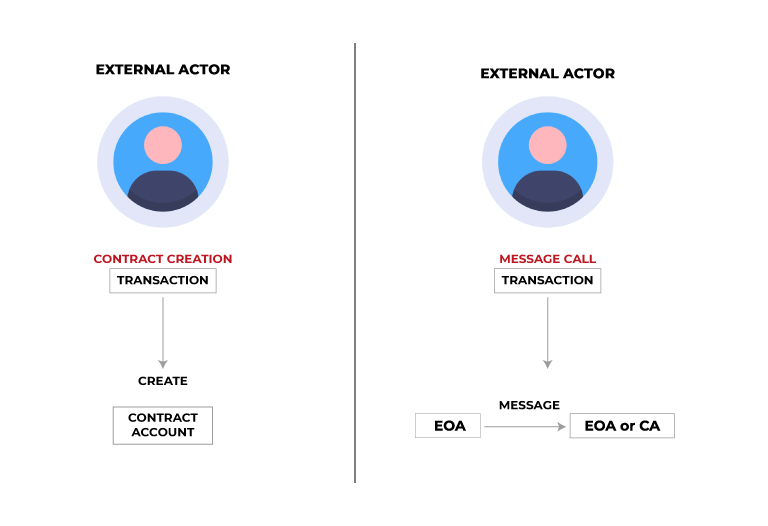
Table of Contents
ToggleSatoshi Nakamoto (creator of Bitcoin), set a standard with his famous White Paper where he explained how it works. But Ethereum was born to offer something different from Bitcoin and this is reflected in its foundations. Its Yellow Paper is just one more example in this regard.
The simplicity of Ethereum’s White Paper is magnified when compared to the following document issued by the founding team of this network.
Aimed at different audiences and written by different people, these scientific pieces combine to give a complete picture, not only explaining what Ethereum is, but also giving a vision for the future.
Today it’s my turn to tell you, what this famous document known as Yellow Paper is all about.
What is the Ethereum Yellow Paper?
The “Yellow Paper” of Ethereum is a technical document, created by Gavin Wood, which provides not only details about the operation of the network, but also future plans for it.
However, it is written in a total of 41 pages, counting appendices. Therefore, all the scientific-level detail of the technology behind Ethereum is presented in a concise manner. To describe in a thorough way how Ethereum works, we could occupy a collection of books, with different volumes.
Comparison with the White Paper
The standard in terms of “White Papers” was undoubtedly set by the one presented in 2008 by Satoshi Nakamoto. It describes how Bitcoin works and its objectives. Although it is recommended reading for anyone interested, certain parts of that paper are highly complex, especially those focused on mathematical formulas.
When we face the Ethereum “White Paper”, the experience is very different. It provides a summary of how Bitcoin works, and then focuses on the presentation of this new network. This document was created by Vitalik Buterin.
From subjecting both Ethereum documents to a comparison, we can say that the White Paper can be seen as an introduction or presentation of the network. While Gavin Wood’s creation, is a technical document of greater complexity dedicated to those who want to know the behind the scenes of Ethereum.
I feel obliged, before continuing with the development of this “Paper”, to dedicate a few words to its creator, Gavin.
Gavin Wood, the creator of Ethereum’s Yellow Paper.
The creator of this Yellow Paper was born in Lancaster, England, 42 years ago. From the pre-Ethereum years, I can tell you that Gavin, at York City University, obtained his MSc in Computer Systems Engineering and Software Engineering. Three years later, in 2005, he obtained his PhD.
His involvement with Microsoft, as a research scientist, is noteworthy.
Gavin and Ethereum
During 2013 and 2014 he was part of the founding team of Ethereum along with Vitalik Buterin, Charles Hoskinson, Anthony Di Iorio and Joseph Lubin. Prior to leaving the project in January 2016, he left significant footprints in Ethereum.
He was the driving force and major participant in the development of Solidity, the programming language in which most of Ethereum’s smart contracts and compatible EVM networks are developed.
Of course, as I already mentioned, he was in charge of writing the network’s Yellow Paper, where, among other great contributions, he defines the “Ethereum Virtual Machine”.
Gavin, was the first chief technology officer of the Ethereum Foundation and is responsible for the birth of Parity Technologies. Company with which he developed a “client for the Ethereum network”, written in the Rust language.
Gavin post-Ethreum
Continuing his career in the blockchain world, Wood created the Web3 Foundation. It is a non-profit organization, whose main objective is to disseminate and empower decentralized technology and its infrastructure.
Here his probably most resonant product is the Polkadot network. In it Gavin puts his stamp on and fully develops his vision of how and for what purpose a blockchain should be created. Clearly, his crypto-legacy will fully “materialize” through the operation of Polkadot.

The contents of the Yellow Paper
At the beginning of this document, Gavin does not skimp on impacts and gives us his definition of Ethereum.
According to him, Ethereum is a transactional machine with shared state, applied in a generalized way, in order to provide a plurality of resources, each with a different state and operating code, but capable of interacting with each other through a messaging method. The complexity of the document does not delay in making its entrance.
Before starting, we anticipate that in this paper we will find, an analytical development on four aspects of Ethereum:
Its design
- Its design
- Its implementation problems
- The opportunities it offers
- Anticipated future obstacles
I will now present an extremely brief summary of the Yellow Paper.
Introduction
In this section, Gavin welcomes us by telling us about Ethereum’s objectives, where one of them stands out, which is to facilitate transactions between people who otherwise would not have the means to trust each other.
Also, in this first section of the document, some projects that served as inspiration for the creation of Ethereum are mentioned. As expected, Nick Szabo is given due credit for doing the first known work on the “Smart Contract” concept.
The Blockchain Paradigm
In the second chapter, we get an excellent definition of how a Proof of Work blockchain works, a short summary of how Ethereum works, its states, its values and how its blocks end.
Conventions
Por supuesto, no podía faltar el diccionario, a tener a mano, para comprender mejor el sentido que este documento intenta regalarnos.
State blocks and transactions
It’s time to sharpen our attention, the foundations of the Ethereum network are in front of us. Gavin unpacks the following concepts in detail and depth:
- Network status
- Transactions
- Blocks
The mathematical formulas are already a complement to the very present text, therefore a base of them will facilitate its comprehension.
Gas and payments
This extremely short section is motivated by the fact that within the components of a transaction, each of the concepts related to “gas” and payments in the network are explained.
Wood here only elaborates on the consequences of an “unsuccessful” transaction and the consequences for the gas used in it, SPOILER, we lose him.
Execution of transactions
In this section, number 6, you will find all the mathematical science behind every “simple” transaction on the Ethereum blockchain. By now, algebraic formulas have completely won the scene.
Creation of smart contracts
Everything behind the creation of a “Smart Contract” is under this heading. Gavin succinctly details the method and the network consequences of creating one of these wonderful, transparent and predictable pieces of software.
Messaging
Here you will find, in great detail, what happens each time a message is sent over the network and what code is executed in these cases.
Execution Model
In the section dedicated to the “Execution Model”, it is specified how the state of the system is altered, after giving it a series of instructions, represented by binary code, and a small “tuple” or list of environment data.
It is worth mentioning that the famous acronym EVM is explained in detail in this section of the document. Today the phrase “Ethereum Virtual Machine” is something so commonplace for us, that it is interesting to highlight the moment in which Gavin presented it to us with such detail and simplicity.
From block tree to blockchain
The mathematics behind the consensus that leads to each small block being part of the larger Ethereum blockchain is summarized here.
Block finalization
We find in this section everything that has to do with the completion and accession of a new block to the Ethereum blockchain. From validation to the calculation of rewards, always a hot topic, they are summarized and scientifically supported by Gavin.
Contract implementation
Concepts such as data to be consumed and the handling of random numbers in smart contracts are the subject of this part of the paper.
Future directions
From day one, the creators of the network predicted the biggest problem of this blockchain, scalability. Gavin provides his perspective on the issue where sharding becomes evident through his lyrics.
Conclusions
This section tells us that we have, almost, reached the end of the paper. After the presentation of the network and its future problems, we find the well-deserved acknowledgements, a dictionary detailing complex terms used throughout the “Yellow Paper” and the necessary appendices where extra information is provided.

A yellow reflection
After this brief review of Ethereum’s Yellow Paper, each reader will be closer to determining whether or not it is a document they should read.
The reality, indicates that substantially more everyday users of the Ethereum network have not even read the network’s White Paper. Which leads us to intuit, that the numbers when it comes to stacking Yellow Paper readers, will be even smaller.
Beyond being necessary to have certain notions of mathematics, algebra and statistics, among other branches of science, before facing this document, this is not knowledge that a thorough research on the “web2” can solve to conclude with a complete understanding of what Ethereum has to offer.







